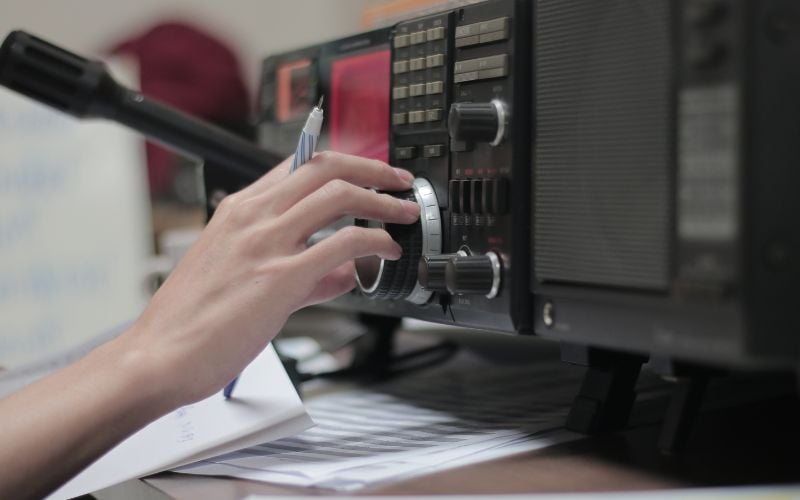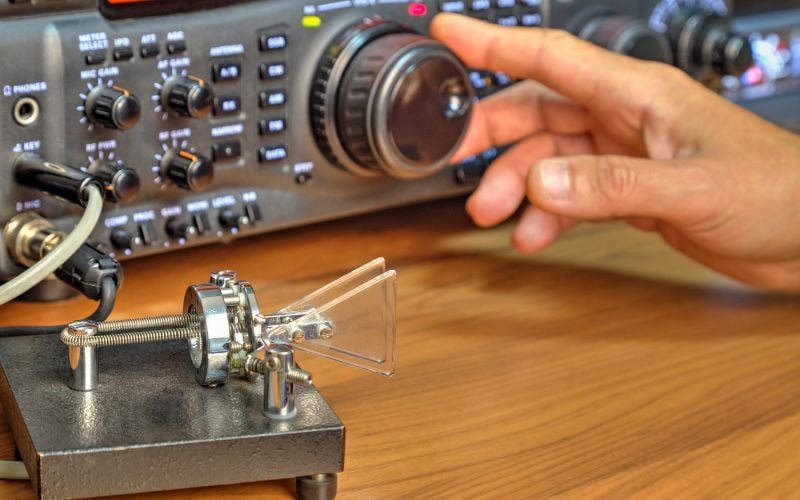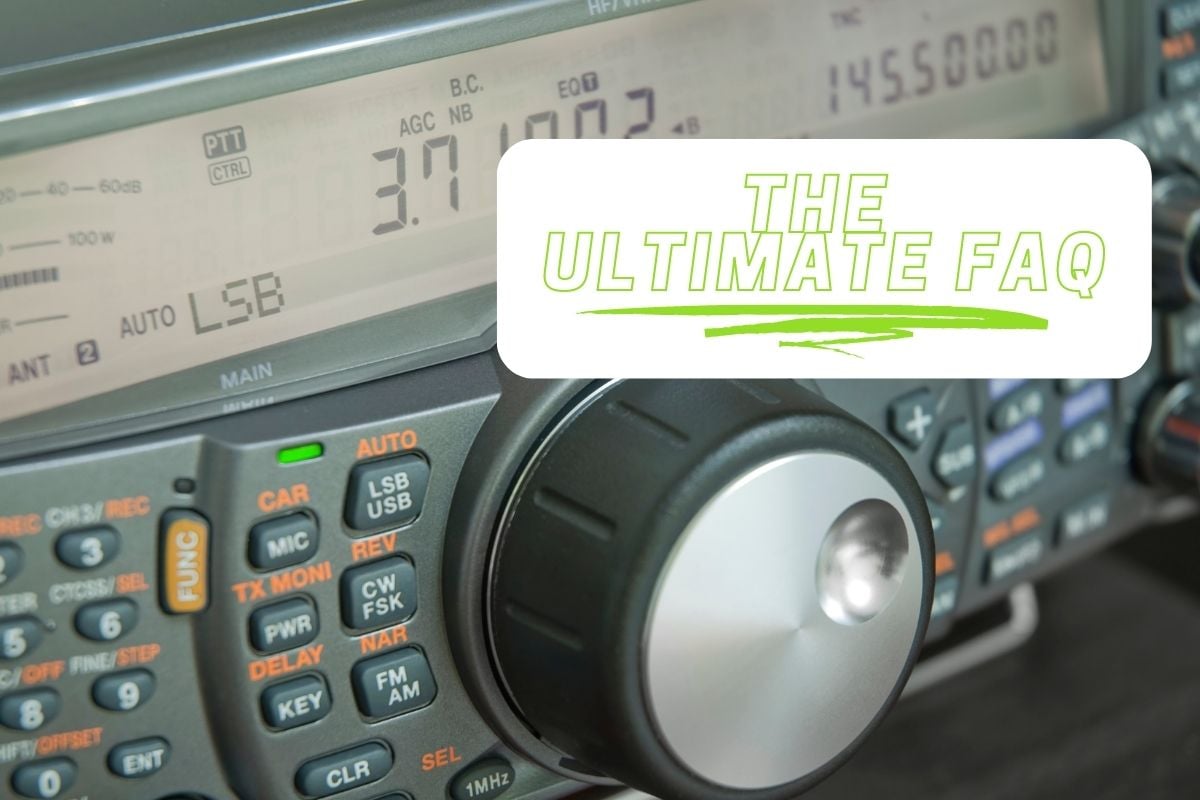Shortwave radio transceivers are essential tools for communication in various applications including emergency response, weather alerts and travel.
With the ability to transmit and receive signals over a wide range of frequencies, shortwave radio transceivers offer a reliable and versatile communications solution.
In this ultimate shortwave radio transceiver FAQ, we will cover all the components and types and make comparisons to other radio transceivers, including how to choose a shortwave radio transceiver and where to buy one.
Whether you’re a radio hobbyist, a traveler, or need reliable emergency communications, this post will provide you with all the information you need to make an informed decision!
What is a shortwave radio?
A shortwave radio is a device that can both transmit and receive radio signals in the shortwave frequency band.
These transceivers enhance long-distance communications, particularly in remote or disaster-stricken areas where other forms of communications are unavailable.
The following are components of a shortwave radio transceiver.
● Radio frequency (RF) section.: This is the most important part of the transceiver, where the radio signals are generated, amplified and transmitted. The HF section contains the circuits for the oscillator, amplifier, mixer and modulator.
● microcontroller: The microcontroller is the control center of the transceiver, responsible for processing and executing commands. It also manages the digital display, user interface, and other functions.
● antenna: The antenna is an essential part of the transceiver as it radiates the RF signals. There are different antennas for shortwave radios, including whip, dipole, and yagi antennas.
● power supply: The transceiver requires power to operate, and the power supply provides it. Most shortwave radios use either an internal rechargeable battery or an external AC/DC power source.
● audio section: The audio section of the transceiver processes the audio signals received or transmitted by the transceiver. It contains the speaker, microphone and audio amplifier circuits.
● Display and User Interface: The user interface allows the operator to control and monitor the transceiver. This includes the LCD or OLED display, knobs, buttons, and other controls.

What types of shortwave radio transceivers are there?
Shortwave radio transceivers come in a variety of shapes and forms, each with different features and capabilities.
The following are some of the most common types of shortwave radio transceivers.
● Portable shortwave radios: These are small, portable devices that are easy to carry. They are designed for use in the field, be it hiking, camping or emergency communications. Portable shortwave transceivers are typically battery powered and often have built-in antennas.
● Base station shortwave radio transceiver: These are larger devices designed for permanent installation in a fixed location. They usually require an external power source and an external antenna. Base station transceivers are designed for more demanding applications such as long distance communications or broadcasting.
● All-band shortwave radio transceiver: These transceivers cover multiple frequency bands, including the shortwave, mediumwave, and longwave bands. They are ideal for listeners and hobbyists who want to explore different types of radio communications.
● Multimode shortwave radio transceiver: These transceivers are capable of supporting multiple communication modes including voice, data and digital modes. They are best suited for radio amateurs who want to explore different types of radio communications.
● SDR (Software-Defined Radio) shortwave radio transceiver: These transceivers use software to perform many traditional hardware functions, making them extremely flexible and upgradeable. These transceivers are for hobbyists and experimenters who want to explore cutting-edge wireless technology.
Comparison with other types of radio transceivers
Shortwave radio transceivers are unique in many ways and differ from other types of radio transceivers.
Here is a comparison between shortwave radio transceivers and other types of transceivers.
Shortwave radios vs. VHF/UHF radios
Shortwave radios operate in the shortwave frequency band (3-30 MHz), while VHF/UHF radios operate in the VHF (30-300 MHz) and UHF (300-3000 MHz) frequency bands.
Shortwave radios are better suited for long-distance communications, while VHF/UHF radios are excellent for local communications.
Shortwave radios vs. CB radios
CB (Citizen Band) radios are limited to the 27 MHz frequency band and are primarily used for local communications.
On the other hand, shortwave radios can communicate over much longer distances and cover a wider frequency range.
Shortwave radio transceivers vs. satellite radio transceivers
Satellite radio transceivers rely on satellites for communication. In contrast, shortwave radios use the ionosphere to reflect signals over long distances.
Shortwave radios are ideal for areas with poor satellite coverage or when no satellites are available. At the same time, satellite radio transceivers are suitable for global communications.
Shortwave radio transceivers vs. receivers and transmitters
Shortwave radio transceivers, receivers, and transmitters are all related to radio communications but have different functions and capabilities.
A shortwave radio can both receive and transmit radio signals. A receiver can only receive signals and a transmitter can only transmit signals.
Portable vs. shortwave radio transceivers in base stations
Portable shortwave radios are compact and lightweight, making them ideal for travel and emergencies.
Shortwave base station radio transceivers are larger and more powerful, so use them in a fixed location, such as a B. at home or in the office.
Factors to consider when choosing a shortwave radio transceiver
The frequency range of a shortwave radio transceiver is important to consider as it determines the range of frequencies that can be received and transmitted.
Output power is another critical area to consider as it determines the range of communications.
Higher output power enables longer range communication, while lower output power is suitable for short-distance communication.
Shortwave radio transceivers can be heavy and bulky, which is a portability concern. If portability is important, choose a compact and lightweight model.

Consider the user interface of the shortwave radio as it determines how easy the device is to use. A user-friendly interface is essential for usability.
Finally, cost is another important factor as it can vary widely. The cost of the transceiver should be balanced against the desired features and capabilities.
The best shortwave radio transceivers for various applications
For amateur radio hobbyists, look for a shortwave radio with a wide frequency range, an easy-to-use interface, and multiple modes of operation.
For travelers, a compact and lightweight shortwave radio transceiver with a user-friendly interface and a wide frequency range is the best option.
For commercial use, look for a shortwave radio transceiver with a wide frequency range, high output power, and a rugged design.
What features should I look for in a shortwave radio?
- Wide frequency range: A wide frequency range is essential for shortwave radios because it allows communication over a wide frequency range.
- User-friendly control panel: A user-friendly interface is important for ease of use and quick operation.
- Multiple modes of operation: Multiple modes, such as SSB and CW, are essential for amateur radio hobbyists and commercial users.
- antenna: An antenna is an important accessory for shortwave radios as it is used to receive and transmit signals.
- battery or power supply: A battery or power supply is essential for portable shortwave radios, while a power supply is a must for base station shortwave radios.
Where can I buy a shortwave radio transceiver?
Shortwave radio transceivers can be purchased from a variety of sources, including this one.
- electronics retailer: Electronics retailers such as Best Buy, RadioShack and Amazon stock a wide variety of shortwave radios from a variety of manufacturers.
- online retailer: Online retailers like Amazon, eBay and B&H Photo also have all kinds of shortwave radios.

- manufacturer websites: Many shortwave radio manufacturers have websites where their products can be purchased directly.
- Needed: Shortwave radios can also be purchased used on sites such as eBay and Craigslist. However, care should be taken when buying used equipment as the condition and quality may be unknown.
Final Thoughts
Shortwave radio transceivers are a valuable communication tool in various applications.
Understanding the basic components, types, and differences between shortwave radio transceivers and other radio devices is critical to making the right choice.

